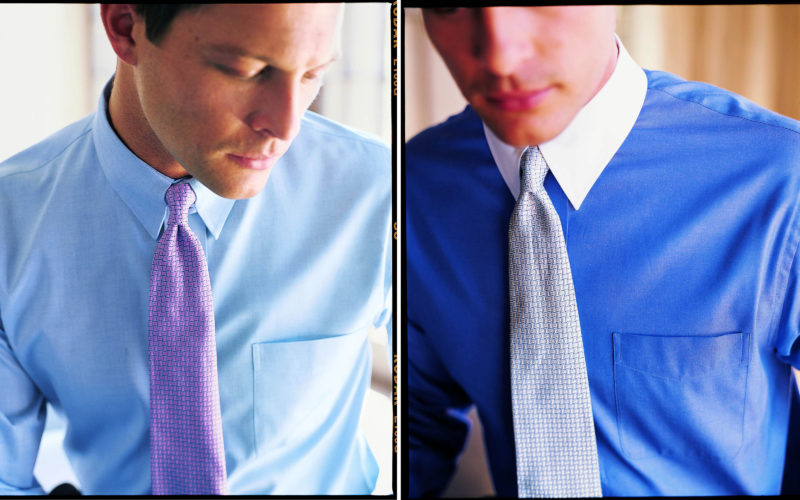Q. Now that wearing ties is less common, when I do wear one, I want it to look perfect. What is the current knot and choice of accessory (meaning: tie bar, tie pin, tab collar, or none of the above)? I’ve noticed that some men being interviewed, etc. on TV and Zoom wear their ties knotted close to the collar so there’s no space above the knot; others tie the knot a bit lower and that leaves a small gap just above it. If both can be correct, does it depend on the kind of collar he has on his shirt?
A. It would be a serious mistake to underestimate the importance of this smallest item in a man’s overall look. People may not remember what else you wear, yet they often remember your tie.
In terms of that tiny bit of difference, the placement of the knot, I know that most people are not aware of it and do not think about it, but some of us very much do. By “us” I mean those who care about clothes and who enjoy looking “perfect.” It has always intrigued me that a man can say so very much about himself by which necktie he chooses, and how he chooses to wear it. Quite a few years ago, when I was an invited speaker at a business conference, during a pre-dinner cocktail hour the evening before my lecture, I noticed a well-dressed man whose necktie was a few fractions of an inch narrower than his colleagues’. In a brief show-off moment (where my object was admittedly to establish my credentials and make it clear I had noticed his tie and the messages it sent about his background), I said to him, “Princeton?” His immediate response was, “Yale!” This said a lot about both of us.
So it follows: if your tie is the one item that people remember, it should be just right. What makes it right?
- A tie should have a name, a real name, like stripe, pindot, foulard, paisley, plaid, or solid.
- A tie should be made of natural fiber: silk, cotton, linen, or wool – no polyester.
- A tie should have one of two types of knots: a four-in-hand or a half-Windsor.
- A tie should have a dimple under the knot.
- A tie should be knotted so that no shirt shows above it; there should be no gap above it . . . but not so tight that it pulls the collar in.
As to your question about current shirt collar and necktie accessories, these elements vary with fashion’s swing of the pendulum. In recent years, collar bars, collar pins, and tab collars have not been in style (even so, if you own any of these, do not get rid of them – they will return). On the other hand, tie clasps (which were totally out of favor for years) are once again an option for men who like them.
The choice of knots is based on the shirt collar, the style of dressing, and the wearer. Conservative/Ivy League/preppy dressers who generally favor button-down collar shirts almost always choose the narrow, and somewhat askew, four-in-hand knot. Fashion-forward dressers usually wear the triangular, more symmetrical, half-Windsor knot (not the full-Windsor, which is too large and bulky for today). More typical middle-of-the-road dressers often alternate between these two knots, depending on which shirt they are wearing.
To summarize: slightly casual button-down collar shirts take the four-in-hand knot; dressier spread collars take the half-Windsor; and straight-point collars may take either knot, depending on the wearer’s preference.
I always say that the way we dress projects volumes to the world, and I believe no item in a man’s wardrobe says quite as much as his necktie. If you believe anything you are reading here, believe that other people read a great deal about you by glancing at your tie. They’ll decide whether to give you time or brush you off; take you seriously or regard you as inconsequential; feel superior to your place in the social order or see you as one who belongs.
Yes, all that – and more – in your tie.
Please send your men’s dress and grooming questions and comments to MALE CALL: Lois.Fenton@prodigy.net









